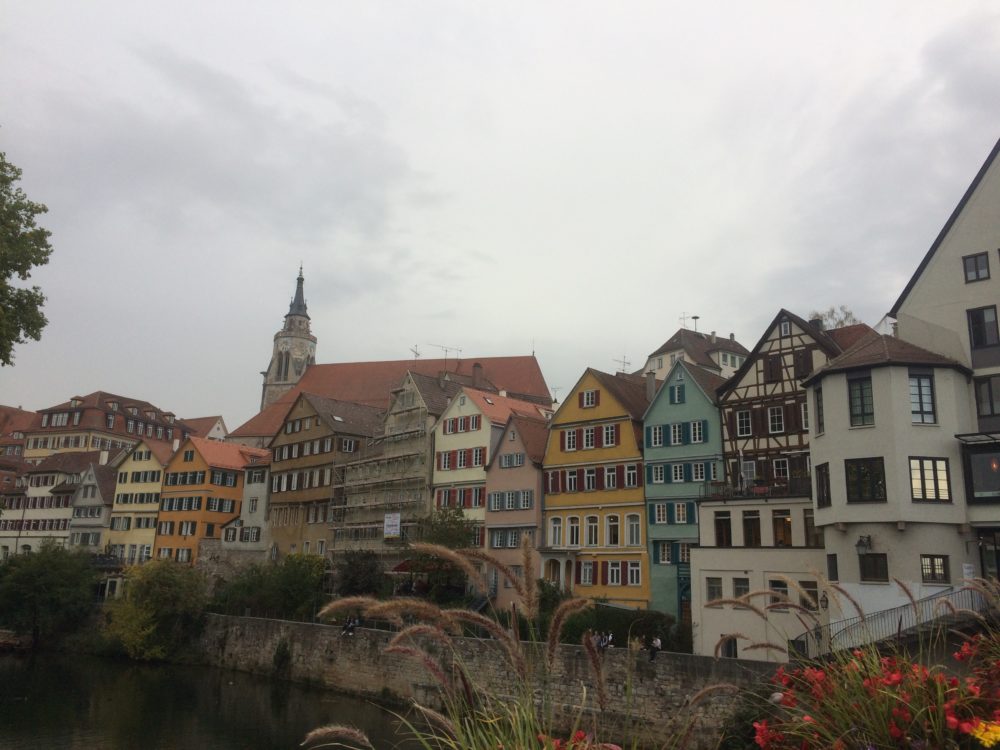Read this blog in:

Tracking Adenovirus Binding in Tübingen
Hello! My name is Aleksandra Stasiak and I am a PhD student at Professor Thilo Stehle’s group at University of Tübingen in Germany. I am interested in viruses, the mechanisms of how they interact with our bodies and how to disrupt them. Consequently, my PhD project is about a virus, the adenovirus, and in this post I want to explain why and how I am doing it.
What? And why?
Adenoviruses cause a number of different diseases, such as conjunctivitis, gastrointestinal and respiratory infections. However, they also have a different face – potential gene delivery vectors, which we could use in gene therapy, cancer therapy or vaccines. They have been used in hundreds of clinical trials, but we can still learn more about them and improve them. Therefore, it is important for us to understand how they interact with human cells. We could use this knowledge to point them in the directions of particular cell types like a cancer cell for oncotherapy, or an immune cell for a vaccine.
The adenovirus begins to interact with a cell by binding proteins which stick out from cell surface. We call these proteins virus receptors. On the viral side of things, adenovirus is a neat package composed of proteins. Inside of the package, or the capsid, are the DNA and proteins needed for infection. It is the capsid proteins which begin interacting with the cell.

An adenovirus capsid: the hexons are purple, the fibre knobs are green, and the penton base is light blue. A cartoon representation by David Goodsell, published at the Protein Data Bank 101’s Molecule of the Month website.
The Adenovirus Capsid
Viral capsids consist of just a few kinds of protein, repeating many times to form a regular structure. Although it may look like a ball at first glance, the adenovirus capsid is not spherical. Actually, it is icosahedral: it has 20 faces and 12 vertices (see figure). The most common protein in the capsid is the hexon, which repeats 720 times. On each of the vertices, there are proteins which interact with the viral receptors on cell surface. These proteins are the fiber knob, which sticks out away from the capsid, and the penton, which sits at the very bottom of the fiber. Both these protein complexes interact with receptors. First, the fiber knob attaches to one of the few possible attachment receptors. Next, the penton attaches to its entry receptor – the integrin, and the virus can enter the cell.
The interaction between the penton and the integrin is what my PhD project focuses on. This is in line with the theme of pathogen adhesion in the ViBrANT ITN! Integrins are a large family of cell surface proteins responsible for relaying messages (signalling) between the cell and its surroundings. They influence growth, immunity, and development. Viruses have evolved to use many common molecules like these to infect cells. Consequently, we want to see how the atoms of the integrin and the penton are arranged in three dimensions and what bonds they form. This will help us design viruses which are, for instance, only able to do infect particular cells. Additionally, another use could be to design drugs which prevent the virus from binding and entering.
How?
In order to establish the arrangement of atoms in a protein or a protein complex, we use techniques from a branch of science called structural biology. Andreas mentioned this already in his blog post. Our lab works mostly in X-ray crystallography. In this technique, X-rays are shot at protein crystals. Then, we use the patterns observed to determine the arrangement of atoms in the crystal. This probably deserves its own post, but for the moment, suffice it to say that getting proteins to form crystals is tricky and requires a lot of protein!
Who?
I was born in Warsaw, Poland, and I went to school there. Once I graduated high school, I studied in Scotland and Finland, graduating with a Master’s Degree in Biochemistry last June. During my studies, I have participated in academic research and decided I wanted to continue trying to understand how our bodies work and how viruses interact with them and manage to manipulate them. Additionally, I love getting to know different places and I am very happy to have moved to Germany, my fourth country in two years!



